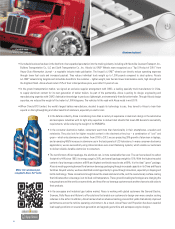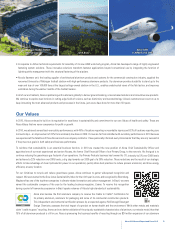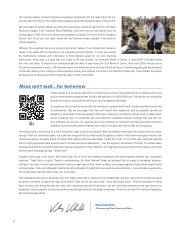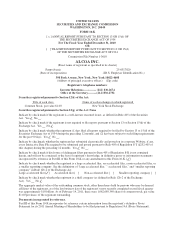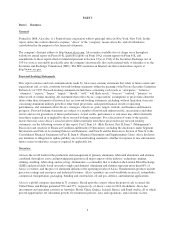Alcoa 2010 Annual Report Download - page 16
Download and view the complete annual report
Please find page 16 of the 2010 Alcoa annual report below. You can navigate through the pages in the report by either clicking on the pages listed below, or by using the keyword search tool below to find specific information within the annual report.As noted above, Alcoa and Ma’aden entered into an agreement that involves the development of an alumina refinery in
the Kingdom of Saudi Arabia. Initial capacity of the refinery is expected to be 1.8 million mtpy. First production is
expected in 2014.
The 2.1 million mtpy expansion of the Alumar consortium alumina refinery in São Luís, Maranhão, has increased the
refinery’s nameplate capacity to approximately 3.5 million mtpy, with Alcoa’s share of such capacity more than
doubling to 1.89 million mtpy based on its 54% ownership stake through Alumínio and AWAC. Construction on the
refinery was finalized at the end of 2009.
In November 2005, Alcoa World Alumina LLC (AWA LLC) and Rio Tinto Alcan Inc. signed a Basic Agreement with
the Government of Guinea that sets forth the framework for development of a 1.5 million mtpy alumina refinery in
Guinea. In 2006, the Basic Agreement was approved by the Guinean National Assembly and was promulgated into
law. The Basic Agreement was originally set to expire in November 2008, but has been extended to November 2012.
Pre-feasibility studies were completed in 2008. Further project activities are contemplated in 2011.
In September 2006, Alcoa received environmental approval from the Government of Western Australia for expansion
of the Wagerup alumina refinery to a maximum capacity of 4.7 million mtpy, a potential increase of over 2 million
mtpy. This approval has a term of 5 years and included environmental conditions that must be satisfied before Alcoa
can seek construction approval for the project. The project was suspended in November 2008 due to global economic
conditions and the unavailability of a secure long-term energy supply in Western Australia. These constraints continue
and as such the project remains under suspension. Alcoa is therefore seeking an extension of the 2006 environmental
approval for the expansion for a further 5 years.
In 2008, AWAC signed a cooperation agreement with Vietnam National Coal-Minerals Industries Group (Vinacomin)
in which they agreed to conduct a joint feasibility study of the Gia Nghia bauxite mine and alumina refinery project
located in Dak Nong Province in Vietnam’s Central Highlands, with first stage capacity expected to be between 1.0
and 1.5 million mtpy. The cooperation between AWAC and Vinacomin on Gia Nghia is subject to approval by the
Government of Vietnam. If established, the Gia Nghia venture is expected to be 51% owned by Vinacomin, 40% by
AWAC and 9% by others.
8


